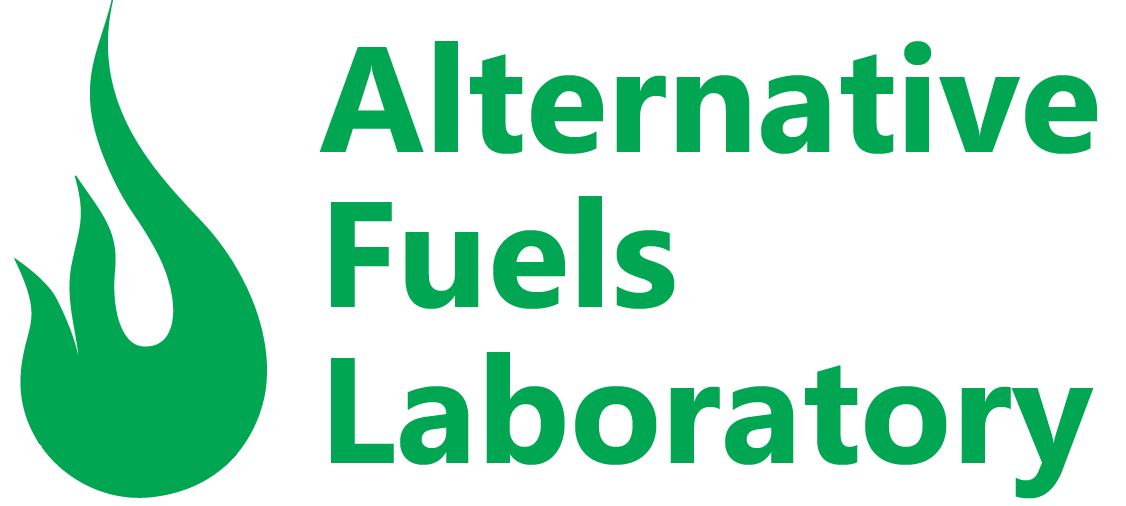Metal-Water Reaction
Overview
The AFL has identified two promising ways of utilizing metal fuels: high-temperature reaction with water to produce heat and hydrogen (wet cycle) and direct combustion with air (dry cycle). These two cycles are complementary metal-oxidation processes for enabling the concept of metal fuels. Refer to the metal-air combustion section to learn more about the dry cycle.
In the wet cycle, metals are oxidized with water in a high-temperature high-pressure reactor to release hydrogen, heat. The hydrogen can be used in fuel cells to produce electricity or can be burned inside an internal combustion engine for motive power or electricity production. The heat released by the reaction can be used to drive a heat engine. Neither the reaction process nor the use of the reaction products emits CO2 or other greenhouse gasses.
The by-products of the reaction, metal oxides (or hydroxides) can be separated from the output stream and collected for recycling. If the recycling is done using inert anode technology and renewable power, there are no greenhouse gas or CO2 emissions anywhere in the cycle.
Aluminum as the fuel of choice
Aluminum is well suited for the wet cycle: it is abundant on Earth, can be made without greenhouse gas emissions, and it is safe to store and transport. Aluminum is also energy dense. It has a high specific energy of approximately 8.6 kWh per kilogram, which is on par with the hydrocarbons currently in use. When reacted with water, the reaction of 1 L (about 2.7 kg) of aluminum yields the equivalent of 4 L of cryogenic hydrogen as well as the same amount of heat contained in 1 L of diesel fuel.
Metal water cycle
This schemactic shows the circular nature of metal-water systems. The metal reacts with water to produce heat and hydrogen (clean energy). The oxide by-products are collected and recycled using clean power, allowing the cycle to continue. Aluminum, the most promising metal fuel for such systems, can be recycled using inert anodes rendering the entire cycle carbon-free.

Aluminum-water reaction products
These products come from some batch reactor experiments using 3 mm aluminum slugs (A). It shows the reaction completeness increasing with temperature. The aluminum is partly converted to aluminum hydroxide at 300°C (B) and 350°C (C), to finally reach full yield at 380°C (D), in the supercritical regime.

Batch reactor experimental apparatus
This experimental apparatus is used to study the reaction yield of various metals at different experimental conditions.

Valved reactor experimental apparatus
This experimental apparatus is used to study reaction kinectics at specific experimental conditions as a valve enables the seperate heating of products.

List of publications from the AFL
-
- Trowell, K.A. et al., 2020, “Aluminum and its role as a recyclable, sustainable carrier of renewable energy,” Applied Energy, 275, p. 115112. DOI: 10.1016/j.apenergy.2020.115112.
- Trowell, K.A. et al., 2020, “The use of supercritical water for the catalyst-free oxidation of coarse aluminum for hydrogen production,” Sustainable Energy & Fuels, 4(11), pp. 5628–5635.
- Bergthorson, J.M., 2018, “Recyclable metal fuels for clean and compact zero-carbon power,” Progress in Energy and Combustion Science, 68, pp. 169–196. DOI: 10.1016/j.pecs.2018.05.001.
- Bergthorson, J.M. et al., 2017, “Metal-water combustion for clean propulsion and power generation,” Applied Energy, 186, pp. 13–27. DOI: 10.1016/j.apenergy.2016.10.033.
- Julien, P., and Bergthorson, J.M., 2017, “Enabling the metal fuel economy: green recycling of metal fuels,” Sustainable Energy Fuels, 1(3), pp. 615–625. DOI: 10.1039/C7SE00004A.
- Trowell, K. et al., 2017, “Effect of particle coating on the thermal response of mixtures of micro-and nano-aluminum particles with water,” Journal of Thermal Analysis and Calorimetry, 127(1), pp. 1027–1036.
- Yavor, Y. et al., 2015, “Comparative reactivity of industrial metal powders with water for hydrogen production,” International Journal of Hydrogen Energy, 40(2), pp. 1026–1036. DOI: 10.1016/j.ijhydene.2014.11.075.
- Yavor, Y. et al., 2013, “Enhanced hydrogen generation from aluminum–water reactions,” International Journal of Hydrogen Energy, 38(35), pp. 14992–15002. DOI:10.1016/j.ijhydene.2013.09.070.
To find more relevant literature, please visit the publications section.
